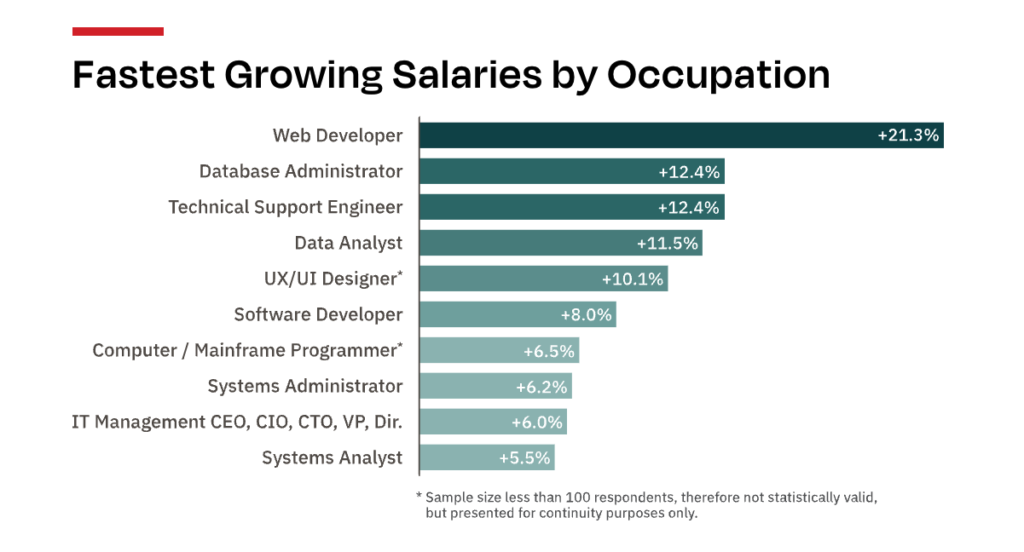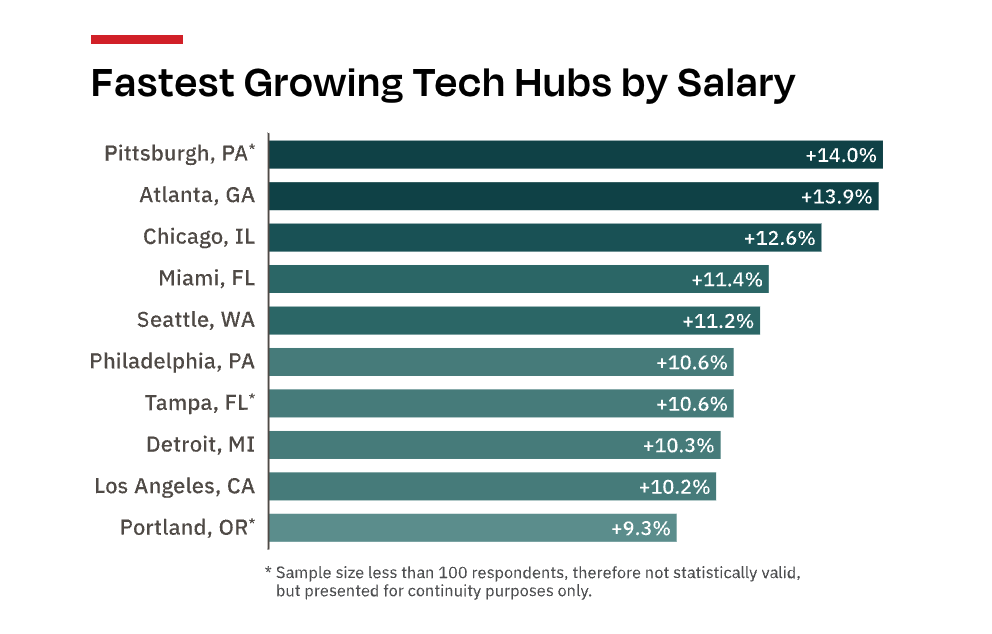
The job market story of 2021 was The Great Resignation – a macro trend that touched nearly every major company throughout the world. Following a year of pandemic lockdown, millions of workers (especially tech talent) caught the quitting bug, as they looked for better situations elsewhere.
Now with 2022 fully underway, surely the market has settled down, right? Well, no. Not at all, actually. The Great Resignation was just the beginning of a new job market paradigm. While it might have all started in 2020 and 2021, we’re still in the early innings of dealing with ripple effects that are sure to reverberate for years to come.
The 2022 Job Market Landscape
So where are we now, and what does it mean for employers? Job candidates are demanding higher salaries and better packages. Top talent is increasingly difficult to find. Retaining and satisfying employees has become an ubiquitous challenge. Employers are being forced to rethink the ways in which they staff up, as traditional strategies have become ever more challenging. While we predicted quite a bit of this in our book, Game Changer we never imagined it would happen this fast.
In this post, we breakdown some of the latest data on tech talent trends. Then we highlight a solution to smarter hiring in this job market – one that leverages the power of on-demand, expert freelancers. Read on to learn how hundreds of companies are still winning in this job market, and if you’re a good match to leverage the same strategy that is working for others.
Unprecedented Hiring Dynamics and Trends
Rhys Hughes, an executive talent partner at venture capital firm GV, perhaps said it best in a recent article in hiring challenges. “The days of ‘I’m so lucky to have a job’ are now a case of ‘We are so lucky to have these employees,’” said Hughes. “Organizations are going to have to be incredibly careful — even those that have experienced unrivaled levels of success in the last four to five years — that they really, truly do understand that this is a candidate’s market.”
So what are some key drivers of this employer-employee power shift? The most simple explanation comes down to a trend that actually predates the Great Resignation by many years: Rising demand for top tech talent. There simply are not enough great developers to go around. It’s the job title that has defined the past decade, as the world’s most successful companies were built on code written by expert software developers and engineers.
Nothing says rising demand like rising prices. To that end, for developers, 2021 was a year of celebration. According to Dice’s 2022 Tech Salary Report, developer and developer-adjacent roles run the show when it comes to salary growth. In Dice’s survey, web developers in particular saw their salaries grow a whopping 21 percent!

According to Dice, these salary trends reach every corner of the tech world. One surprising nugget is that Silicon Valley’s average tech salary increase of 5% wasn’t even close to making the top 10. All but one major city in this list experienced double-digit percentage growth, highlighting the rising tide of demand for great tech talent.

What the Great Resignation also showed us is that the shifting employer-employee power dynamic is not all about money. While increasing salaries make it difficult for many employers to compete, it goes much deeper. According to Pew Research, those who partook in the Great Resignation also reported “no opportunities for advancement,” “feeling disrespected at work”, and lack of flexibility as major reasons for quitting. So not only does today’s talent demand higher salaries, they also demand more complete employee satisfaction. Those who feel they aren’t getting what they want have shown no hesitation to pack up and leave. This is the part we did predict correctly. When top talent wants to join cultures and companies where they can grow and be challenged, they make it happen.
The Hire Slow, Rent Fast Strategy in 2022
To better handle the hiring trends working against employers, companies should pause before they continue to sink resources into their FTE searches. Instead, we propose a solution called Hire Slow, Rent Fast. We first wrote about this strategy back in 2019, and it continues to be the preferred strategy of teams and companies that want to build tech solutions with less friction.
Hire Slow, Rent Fast is a staffing approach that prioritizes renting freelance talent, thus giving a company a longer runway to find the right full time employee(s). Largely a strategy born out of skyrocketing talent demand, Hire Slow, Rent Fast is a way for tech teams to avoid today’s recruiting and hiring bottlenecks. The approach buys companies time to land the perfect full-time hires (which takes particularly long in today’s market) while still getting key work finished, with the help of contractors.
The Hire Slow, Rent Fast model achieves a handful of important things for employers:
1. Freelancers are more cost-effective
The cost breakdown of a full-time employee vs. a contractor can be pretty eye-opening. Consider all the costs that you don’t pay with freelancers: payroll taxes, insurance, 401k matching, PTO, etc. Not to mention, the cost of making a full-time bad hire can be astronomical. Hire Slow, Rent Fast allows employers to get important work done while not rushing to make decisions on FTE hires.
2. Freelancers can onboard and start faster
With a talent agency like 10x, pre-vetted, on-demand talent is ready at a moment’s notice to help teams get to where they want to go. By contrast, the hiring process for a full-time employee can take months. Why not use a great contractor who can get started in a matter of days?
3. Freelancers are lower commitment
For some companies, the decision to hire slow and rent fast begs a simple question: What do you have to lose? The upside is that your tech challenges can be met much faster, at a fraction of the overall cost as with full-time employees. Freelancing provides a way to avoid the craziness of today’s job market. The downside? The freelancer doesn’t work out, and cutting ties is significantly easier than doing so with a full-time hire.
VCs and Startups Are Winning with Freelancers
Back in 2016, we wrote about the emerging trend of leveraging freelancers to gain access to top talent on a budget. Here’s a short excerpt:
Startups and small businesses often lack the funds necessary to hire full-time employees, but they need top-tier talent to help build their businesses.
What was true back in 2016 aged so well that it’s even more true today. Any company looking to do more with less should consider a Hire Slow, Rent Fast hiring model – and many are doing just that. At 10x Management, we have a growing presence in the startup and entrepreneurship spaces. As nimble companies leverage freelancers, 10x has emerged as a trusted, go-to resource to meet those needs.
Along with the increased demand from the startup community, we’ve experienced growing interest from VC firms as well. It makes sense. As VC firms aim to give their portfolio companies an edge, they increasingly point them to the Hire Slow, Rent Fast approach that has worked for hundreds of smart, clever, and agile companies.
TAP: Priority Access to the Best Freelancers
For those serious about implementing a freelancing strategy at their startups or companies, 10x created the (free) Talent Availability Program (TAP), which gives members the inside track on 10x talent coming available.
TAP was created as a way for employers to get the most out of 10x. As our best talent begins to wrap up their existing engagements, they appear in TAP, giving members an early look at newly available developers, programmers, and designers. Some of our best tech experts jump straight from gig to gig, because TAP members scoop them up.
We encourage anyone with freelancing needs to join TAP and take advantage of the most direct and effortless path to expert tech talent. Interested readers can sign up for TAP here.
Is your company ready to Hire Slow, Rent Fast?